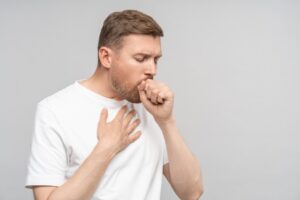Things that most Trigger Allergies
Immunology and Allergic Diseases

Things that most Trigger Allergies
Allergy is a condition where the body gives an abnormal reaction to certain objects or foods. This reaction, which originates from the immune system, can develop against many things. Allergy, which is a common reaction among people, can be mild in some individuals. However, in some people, allergies can be seen at a level that reduces the quality of daily life. Allergies can originate from both natural routes and chemical environments.
Things That Most Trigger Allergies
Existing allergy conditions can be experienced at much higher levels depending on certain factors. We can list the factors that most trigger allergies in people with allergy problems worldwide as follows:
Pollen
Pollens can trigger both seasonal allergies and allergic rhinitis, commonly known as hay fever. Pollen that can mix into the air from trees, grasses, flowers, and even weeds causes some symptoms in people experiencing this problem. Sneezing, nasal congestion, runny nose, nasal itching, and watery eyes are the most common symptoms seen in pollen-related allergies. To reduce or eliminate these problems, measures that can be taken include not going outside on windy days, keeping windows closed, and not operating ventilation devices like air conditioning.
Pet Hair and Skin Flakes
Being in contact with pets can trigger allergies in some people. The proteins secreted from the oil glands in animals’ skin or from their saliva are the factors that trigger allergic reactions. This condition, which is congenital in many people, can appear later in some individuals. At the same time, immunity can develop over time, and after a while, the allergy to animal hair and skin flakes can disappear on its own. Preventing animals from entering bedrooms, regular cleaning, and especially frequent vacuuming of carpets can eliminate the problems experienced. It is not absolutely necessary to stay away from the animal.
Dust Mites
The creatures that live in household dust and are too small to be seen with the naked eye are called mites. Mites living in humid environments survive by eating human skin flakes, pollen, bacteria, and mold. What actually triggers allergies in many people is not dust, but the mites found in dust. To reduce allergic reactions, beds, pillows, and comforters must be covered with dust-proof covers. Sheets used in the bedroom should be washed once a week with very hot water, and dust-collecting items in the house should be reduced as much as possible. Additionally, the entire house should be cleaned daily.
Insect Stings
Allergic reactions triggered by insect stings can pose a life-threatening danger. Therefore, the issue needs to be approached with sensitivity. Symptoms resulting from insect bites or stings can last much longer than a week. Swelling, redness, mild fever, nausea, and weakness are among these symptoms. In rare cases, allergic shock can also occur. Allergic shock has symptoms such as swelling in the face, throat, and mouth, increased pulse, dizziness, sudden drop in blood pressure, and itchy skin rash. In this case, immediate medical attention is required.
Mold
Mold is a substance that contains certain spores. It can carry allergenic substances, irritating substances, toxic or poisonous materials. When contact is made with these spores, allergic reactions can develop. In fact, in some people, even without physical contact, just breathing in an environment where mold is present can bring about allergic reactions. Mold is a substance that grows in humid environments. Therefore, it is usually seen in bathrooms, toilets, and basements of living spaces. It can also easily appear in places with grass and hay. To get rid of mold allergies, living spaces need to be frequently ventilated and humid places should be avoided.
Latex
The latex substance used in some medical materials can be a raw material frequently preferred especially in glove manufacturing. Latex can cause allergic reactions in some people. Skin rash, redness in the eyes, runny nose, sneezing, breathing difficulties, and itching in some body parts, especially the nose, are among these symptoms. Like insect stings, latex allergy carries the risk of allergic shock, and immediate help from a healthcare facility is required.
Medications
Some medications can also cause allergic reactions in people. The most common among these are Penicillin and Aspirin. Facial swelling, itching in the eyes, swelling in the lips and throat, and hives are commonly seen symptoms in drug allergies. When these symptoms are observed, medication use should be discontinued. You need to explain the situation to your doctor. In this case, the physician may suggest a different medication that should be taken along with this drug.
Perfume and Fragrance
Laundry detergent, scented candles, perfumes, deodorants, various fragrant cosmetic products, and even essential products can cause allergic reactions. Usually, people who experience allergic reactions only when exposed to fragrances do not feel the effects for a long time. When they move away from the fragrance, the effects of the allergy also disappear on their own.
Cockroach
There is a protein found in cockroach droppings. This protein can also cause allergic reactions in some people. Even without physical contact with these droppings, the protein can affect people through the air. The most effective solution is to have pest control done or to live in areas with dry air instead of humid areas.
Foods that Trigger Allergies
Not only objects, but some foods can also cause allergic reactions. Food allergies, which are usually discovered in childhood, can also appear in later ages. We can list these foods that can cause allergies as follows:
Cocoa
Although known as chocolate allergy, what actually causes allergies in chocolate consumption is the cocoa it contains. Sometimes the caffeine contained in chocolate can also cause allergies.
Margarine
While omega-3 has an allergy-preventing effect, omega-6 can trigger allergies. These two fatty acids need to be balanced in foods. When they are not balanced, allergies can be seen especially with margarine consumption.
Fried Foods and Chips
In some people, fried foods and chips can cause allergies because they contain excessive fat. This allergy, which usually appears in overweight people, requires staying away from these foods.
Tomato Paste
Tomato paste is among the allergies that appear in childhood. Usually, tomato allergy also accompanies tomato paste allergy.
Honey
Although many people think honey is good for allergies, it actually has an allergy-triggering aspect. Honey consumption is not recommended for people with allergies.
Raw Onion and Garlic
Although consuming garlic and onion in cooked form does not cause allergies, some people’s bodies may show allergic reactions when they consume these foods raw.
Foods That Those with Allergies Should Consume Carefully
Some foods and beverages do not cause allergies by themselves. However, they may also have properties that trigger existing allergies. Therefore, it would be beneficial for those who are allergic to any objects or foods to consume these foods and beverages carefully.
- Foods containing cocoa
- Iced tea and coffee
- Fast food
- Hazelnuts
- Peanuts
- Eggs
- Fish
- Shellfish
- Foods containing gluten
- Foods containing soy
- Foods containing wheat
General Surgery















